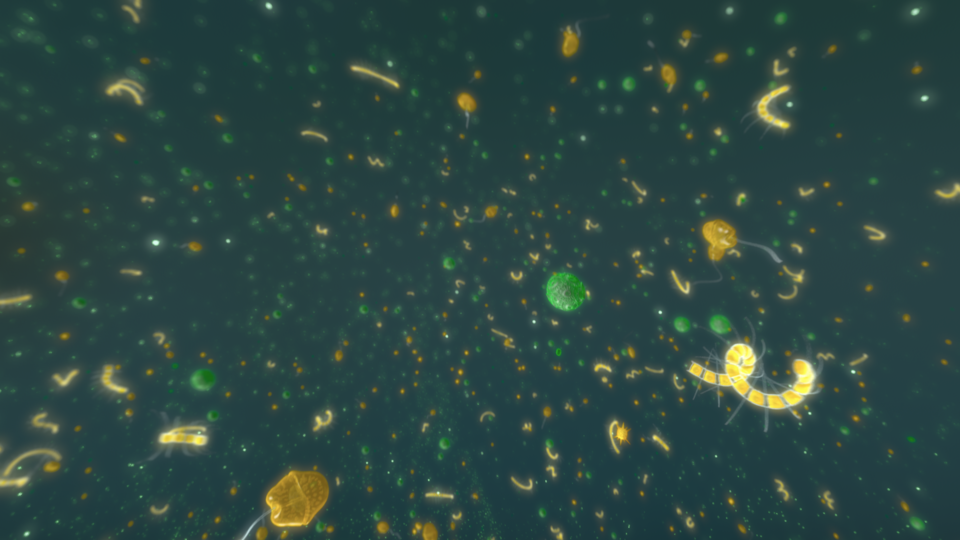Science News
Organic Chemistry by Bacteria

What would we do without organic chemistry? The topic may be the bane of college freshman, but for bacteria, it comes naturally… Along with other chemistry feats, these microscopic life forms perform the reactions needed to create all the chemical diversity of the ocean.
They do this with carbon dioxide from the atmosphere that dissolves into the ocean. In seawater, carbon dioxide becomes carbonic acid, and for some time we’ve known that it can turn into much more complex assemblages, molecules called dissolved organic matter. University of South Carolina’s Oliver Lechtenfeld and his colleagues wondered what fraction of these molecules come from bacteria, and they published a paper in Nature today with a few of the answers.
In his lab, Lechtenfeld took samples of ocean bacteria (such as marine phytoplankton) and measured what molecules they created with simple starting materials. Over thirty days, the bacteria started churning out an astonishingly diverse supply of organic materials, from universally useful amino acids to relatively unreactive carbon rings.
Those amino acids told an important story: the ratio of isomers, or possible arrangements of atoms around the central carbon atom, are labeled either “D” or “L” (from the Latin dexter for “on the right” and laevus for “on the left”), and living things use almost exclusively the left-handed type. As the bacteria grew, Lechtenfeld found more L-types and fewer D-types: proof that they were affecting the small representative ocean created in the lab.
But what of these other dissolved organic molecules? The seafaring microorganisms made a greater variety of different types of carbon chains, in structure and composition of non-carbon atoms, than the researchers anticipated. This flies in the face of prevailing theories that most of the weird molecules in the sea were created abiotically—without help from any living things. Either way, the unreactive organic creations find themselves stuck in the ocean for long periods of time. Starting as carbon emissions, these atoms find their way into the seven seas for good.
The overall diversity, and therefore scarcity of any one type of molecule, led Lechtenfeld and his team to suspect that they wouldn’t be very effective at sending signals to nearby micro-neighbors, a common use for “exometabolites,” organic molecules that work outside a cell. What these molecules do remains an open question: “We now face the challenge of understanding the unknown functional roles of potentially tens of thousands of exometabolites and how they might persist in the ocean,” write the authors.
Exometabolites—what are they good for? When these were randomly created molecules, nobody wondered what they did. If living things make them, one wonders what their role is in bacteria’s microscopic, aquatic lives.
If the bacteria absorb natural carbon emissions, they likely tackle those caused by humans, too. Future research could help identify these small organisms’ larger role in the global carbon cycle.
Image: Phytoplankton from Habitat Earth